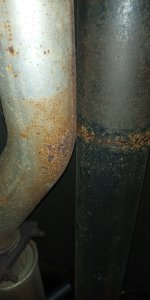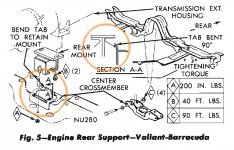b-body-bob
Well-known member
You know how I fixed the vacuum leak I was hunting when the infamous intake full of coolant event occurred? I cut paper gaskets out of the thinnest gasket paper I could buy and used them. Truth.
You'd have to be pretty determined to use the ones that come in the box because IIRC they throw off the bolt alignment by raising the intake and you have a helluva time getting the bolts started.
I'll give her a shot of ether at the gaskets and see if that tells me anything about the intake leak.
$20 for springs is cheaper than $150 for a distributor so I'm leaning toward trying to tune it before replacing it.
FWIW I had a copper out to the house today to do the VIN verification. I opened the hood, pointed at the rad yoke stamping, then at the fender tag and that was good enough. Then I pointed at the dash tag and noted that it has the right kind of rivets there too. He then said we should've started there, it's easier to read. It seems his training didn't cover *why* they do a VIN verification and barely covered "how". But on the + side it only cost $5, if you can ignore all those damned taxes I pay ...
But now I should be able to change the title so that's a good thing.
You'd have to be pretty determined to use the ones that come in the box because IIRC they throw off the bolt alignment by raising the intake and you have a helluva time getting the bolts started.
I'll give her a shot of ether at the gaskets and see if that tells me anything about the intake leak.
$20 for springs is cheaper than $150 for a distributor so I'm leaning toward trying to tune it before replacing it.
FWIW I had a copper out to the house today to do the VIN verification. I opened the hood, pointed at the rad yoke stamping, then at the fender tag and that was good enough. Then I pointed at the dash tag and noted that it has the right kind of rivets there too. He then said we should've started there, it's easier to read. It seems his training didn't cover *why* they do a VIN verification and barely covered "how". But on the + side it only cost $5, if you can ignore all those damned taxes I pay ...
But now I should be able to change the title so that's a good thing.


